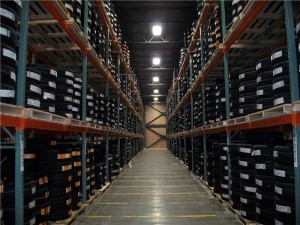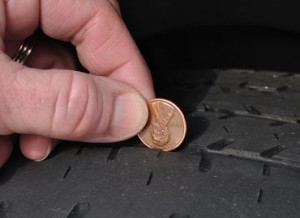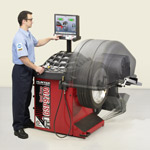What tires should I buy for my car? There is not a simple answer and there is a maze of information available, some good, some bad, and some misapplied. We will try to help you understand how you can find the answer. To make the correct choice, you need to match the attributes of the tire to your environment and primary use. If you do not feel comfortable doing that, the short answer is, find an independent mechanic which you trust and ask them for their opinion. But we encourage you to read on. You may find that it is not as difficult to select tires as you thought.
In general, select a tire (shoe) which fits the car, its purpose and its location. A construction worker does not go to work in sneakers and a track runner does not lace-up in boots. So now we have the fundamental question to answer, in what environment will the vehicle be used? For example: 8 months dry, 2 months rain, 2 months snow with some ice; 4 months below 32 degrees F. The important attributes here are the amount of time the vehicle would be driven in the following conditions, dry, wet, snow, ice and below or above 32 degrees. Also indicate paved or un-paved roads.
We all want tires that cost a little and last forever. So, what about tire manufactures which advertise a high mileage life. What is the deal? You can make a tire last a long time by making the rubber compound hard. The problem is that, in general, the harder you make the compound, the lower the traction (force keeping your car where you want it to be). So, it is also safety issue. Be sure to read the details of the tread life warranty.
I have never known anyone who would be able to meet the mileage warranty requirements when they need to replace their tires. Warranty requirements example: tires worn to 2/32” (to the wear bars), tire worn evenly around and across, proof that an authorized dealer rotated the tires at the tire manufacturer’s recommended interval, no physical damage to the tire (pot hole, curb, etc.)… Then the replacement cost is prorated, that is, if you got 50,000 miles out of your 60,000 mile tires, you have to pay approximately 83% of the cost of the new tires plus mounting and balancing. If you bought them on sale originally, and they are not on sale at the time of warranty, you could pay more for the warranty set than the original cost. Also note that the tire’s traction (safety) in bad weather was significantly reduced long before it reached the 2/32” tread depth. 2/32” tread depth is the minimum tread depth to pass most state vehicle inspections.
Back to the topic at hand; how to select tires…
Take your use requirements and compare them to survey results you can find on web sites such as www.TireRack.com. You will see that the survey results have attributes such as performance in wet, dry, snow and ice. It may also list items such as tread wear and noise. It is a fairly straight forward procedure to compare your requirements to the survey results. But there are some caveats to using customer survey information:
- The survey values are not created in a scientific fashion; they are a customer’s guess
- If the miles reported are less than a few million, the survey results will be much less accurate than for a tire with 10 million reported miles
- Miles reported is significantly influenced by purchases which are influenced by promotions and rebates
- People tend to praise their purchase decision
- Read the reviews with care, or, as I prefer, don’t read them; they are car and user specific and have too many unknown variables such as car and road conditions.
Once you find the tires you want, how should you buy them? We recommend that you buy them online from someone like www.TireRack.com or www.DiscountTireDirect.com and have them shipped to your local installer. Why not buy the tires from a local tire dealer? Would that not be more convenient? If time is of the essence, it may be your best alternative. If you have the time, there are several reasons you can benefit from buying the tires yourself and having them shipped to and installed by our local shop:
- You made an independent choice of the best tire for your driving conditions
- The installer does not profit from your tire choice
- The installer will (should) validate the quality of the tire during the installation process
- The installer has no incentive to install a dated or marginal (in terms of quality control) tire; they did not sell you the tires
- The independent installer can help you define your tire requirements and help you understand the advantages and disadvantages of your choices without undue influence (promotions, rebates, sales, kick backs)
One note on checking the quality of the new tires at installation; the quality of a new tire can only be checked with a “road force” testing system or by putting them on the car after mounting and balancing and road test the car. This test insures that the tire is round under a load; a good test for finding manufacturing defects. This test is unrelated to balancing. The problem is that once the tires have been driven, some tire manufactures require you to prove the defect was not the result of a road hazard, which is difficult. So, make sure your shop has the equipment to test “road force” during the installation process.
Does this help? Or, is it TMI (too much information)? Santa Fe Garage, and most independent shops, will be happy to assist you. We will even acquire the tires for you want.
Want to know more about taking care of your ride? Give us a call at 816-977-1020.








